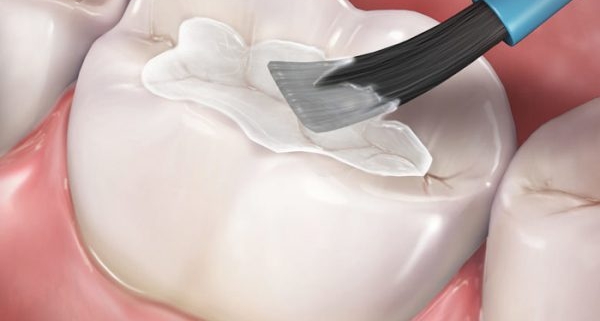Sealants are a Proven and Effective Therapy for Preventing Cavities in Children and Teens
Study: Sealants may reduce caries by up to 80%
By Tony Edwards, Editor in Chief, www.drbicuspid.com
August 5, 2016 — Sealants may reduce carious lesions on the occlusal surfaces of permanent molars by up to 80%, according to a study jointly published by the ADA and the American Academy of Pediatric Dentistry (AAPD).
The authors of the review, hailing from multiple dental schools, organizations, and institutes, sought to summarize the available evidence regarding the effectiveness of dental sealants for preventing pit-and-fissure occlusal caries in primary and permanent molars on children, adolescents, and adults to develop a joint evidence-based clinical practice guideline (Journal of the American Dental Association, August 2016, Vol. 147:8, pp. 631-645).
“Sealants are a proven and effective therapy for preventing cavities in children and teens,” stated lead author Timothy Wright, DDS, in a release from the ADA and AAPD. “The joint report reaffirms that sealants should be a routine part of cavity prevention, as children with sealants are up to 80% less prone to cavities compared to those without them.”
Caries prevalence
In the U.S., nearly a quarter of children and more than half of adolescents have caries in their permanent teeth, according to data from the National Health and Nutrition Examination Survey 2011-2012. Pits and fissures on occlusal surfaces, especially those on permanent molars, increase the risk of these patients developing carious lesions, the authors noted.
“The joint report reaffirms that sealants should be a routine part of cavity prevention.”
— Timothy Wright, DDS, lead study author
The researchers started with more than 2,800 published studies from 1976 through 2016 for their systemic review and reduced the number to 24, including only parallel and split-mouth randomized controlled trials with at least two years of follow-up. They included studies whose authors reported sealant-effectiveness data compared with a control without sealants, fluoride varnishes, or other head-to-head comparisons.
In comparing sealant use versus nonuse, the researchers reviewed nine studies with a total of 3,542 participants. They found that those who received sealants reduced their risk of developing new carious lesions by 76% (95% confidence interval [CI]: 0.19-0.30; p < 0.00001) compared with participants who did not receive sealants.
The researchers also compared sealant use versus fluoride varnishes by reviewing three studies with a total of 1,715 participants. They found that those who received sealants had a 73% reduction in the risk of developing new carious lesions (95% CI: 0.11-0.69; p = 0.006) compared with participants who received fluoride varnishes.
Age of studies
The authors acknowledged several limitations with the review, including an inability to contact primary authors of the studies if there were issues related to risk of bias, as some of the trials were more than 20 years old. They also noted an inability to assess publication bias by means of using a funnel plot owing to the limited number of included studies per outcome.
More research is needed to provide more data about the merits of the different types of sealant materials, the authors noted.
“Available evidence suggests that sealants are effective and safe to prevent or arrest the progression of noncavitated carious lesions compared with a control without sealants or fluoride varnishes,” they concluded.

